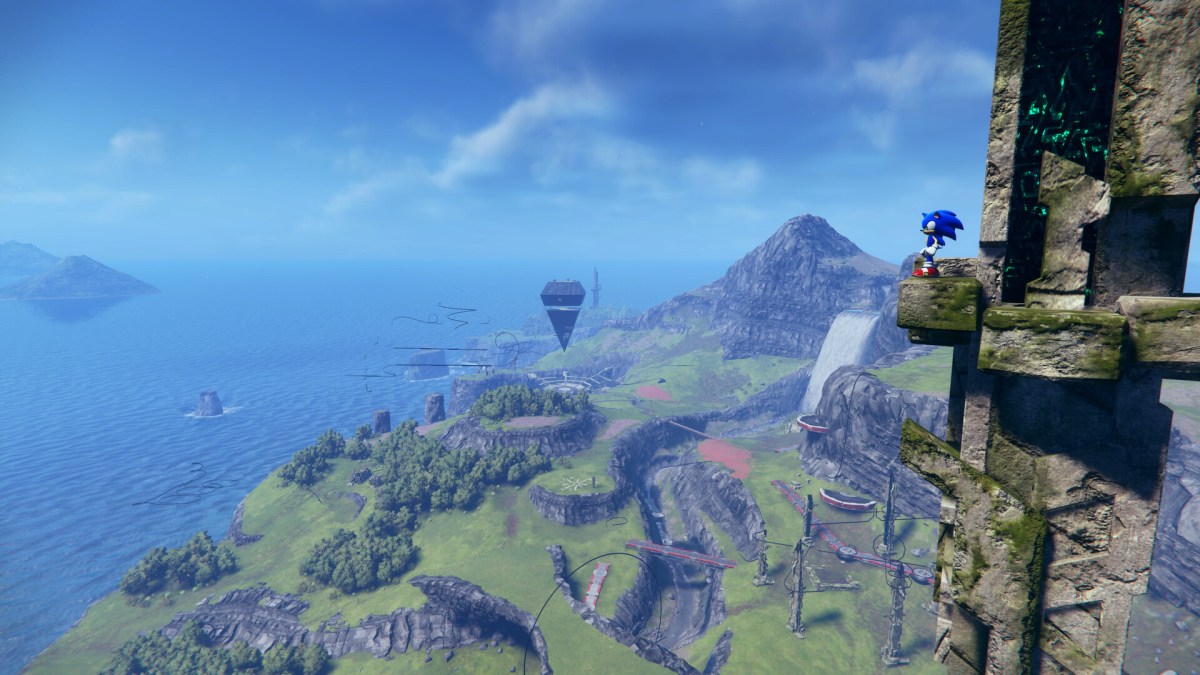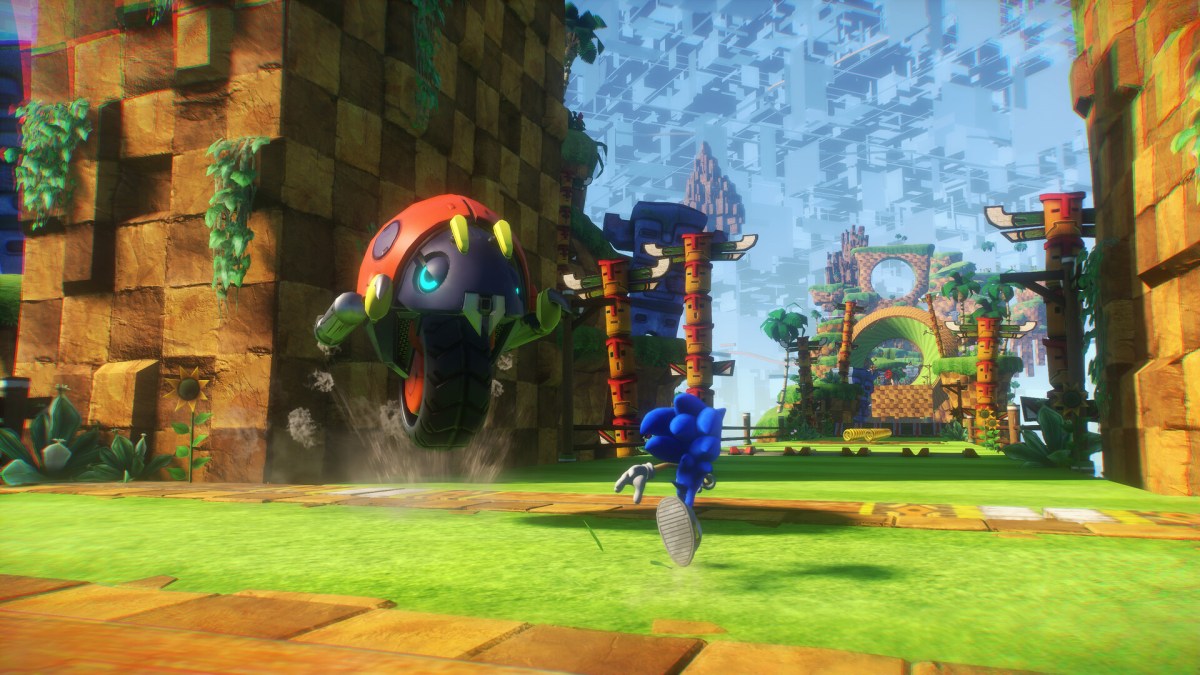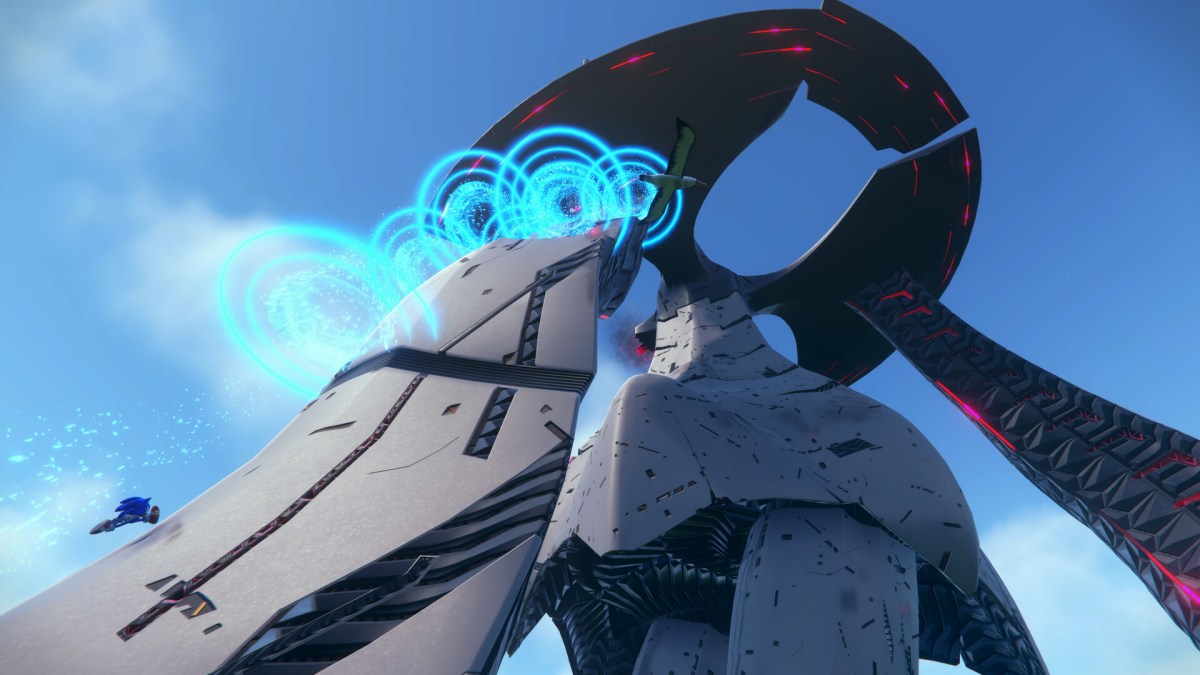I had low expectations of Sonic Frontiers.
Let’s face it: Sonic has not aged well. While Sega’s mascot’s earliest appearances are classics, his sophomore season floundered. With the transition to three dimensions, Sonic lost his identity and has spent almost every game since the 16-bit era in a morass of mediocrity — at best.
I had very low expectations of Sonic Frontiers.
After getting hands-on with Sonic Frontiers at PAX Australia for preview, I might have changed my mind.
The demo section that was available felt like a clearly demarcated tutorial area, with three distinct gameplay elements. Following a typically cryptic introductory cutscene that hinted at some larger story regarding Sonic being transported into another world away from Tails and Amy by some creature or other, we’re plonked right into the red-and-white shoes of the Blue Blur himself.
The tutorial area was a zone of mostly green hillocks and a number of typical tutorial encounters. In this segment, Sonic’s basic repertoire was introduced, with handy areas being marked out for practice. You can run, dash, sprint, air dash, double jump, and rail grind, and it all feels pretty smooth. Most useful is Sonic’s homing dash, which allows you to curl up and zip speedily towards a target, helping immensely with platforming.

As you traverse the world, you collect rings, solve platforming puzzles, and gain experience from slain enemies, unlocking skills via a skill tree and revealing the map as you go. While comparisons to The Legend of Zelda: Breath of the Wild are easy to make, they are not wholly apt. The world does feel quiet and contemplative in a similar way to that of Zelda’s magnum opus, with rather pretty environments to explore. But Sonic Frontiers is much more strictly structured as a gameplay experience. It is more guided, with clear “game” sections that leave less room for experimentation and instead give way to design and mechanical mastery.
There is an undeniable sense of speed to Sonic Frontiers — one that grounds the preview experience as A Sonic Game. Traversal across flat terrain felt good, and the more guided and simple platforming sections were approachable at high speed or more methodically. You feel fast, without feeling out of control.
Until you lose control.
While Sonic is enjoyable to control around lower-stakes locations, that quickly runs aground when intricate platforming comes into the mix. In the demo, there were a number of optional platforming areas, often consisting of small platforms floating over a cliff. With collectible rings as the reward, these mostly served as practice for Sonic’s aerial maneuvers, requiring combinations of double jumps and dashes in and around platforms and floating targets. While movement on the ground was manageable, I found myself getting tied up with a loss of precision and the exact combination and timing of moves certain segments were asking me to execute.

Thankfully, the penalty for fatally failing a platforming segment isn’t harsh, with Sonic being popped right back on firm ground. I’m sure the segments will get easier with practice and mastery, but the full utility of each ability wasn’t clearly explained in these tutorial sections, leaving me feeling unsure of how moves interacted with each other.
Combat is also a mixed bag. The Sonic Frontiers demo preview included a few enemy types, with varying degrees of inventiveness. Fodder enemies are barely an obstacle for Sonic’s dashes and kick attacks, serving mostly as mindless filler. Larger event enemies, however, required a more strategic and rhythmic approach that hinted at a more capable and flexible combat system later on.
One enemy required Sonic to use his homing dash attack on its lower section, removing segments like a Jenga tower until it hit the ground, where you could attack its head. Another leveraged Sonic’s ability to create and close distance, utilizing air dodges and dash attacks to employ hit-and-run-style combat. It overall felt like a perfunctory and obligatory series of combat encounters that never really shone due to generally bland design, yet it also felt capable of a lot more than what was on show.

The final segment of the Sonic Frontiers demo preview was a high-speed run, with Sonic blasting forward along a tightly designed on-rails segment. Controlling Sonic from a fixed, trailing perspective, you sprint along platforms, jump gaps, grind rails, and bounce on springboards, all the while collecting rings and other items. It feels like a traditional 2D Sonic game, with all that it entails. It felt completely different from the rest of the demo, like an entirely different game. It’s something of a throwback and strangely disconnected from the rest of the experience. I’m not sure I liked it, but I am sure that many people will.
Is Sonic Frontiers going to be a “good game”? I’m again not sure. I am pretty sure that the preview section that I played wasn’t good, as both a gameplay experience and as a representation of a complete product. Previews are always problematic experiences, as developers have to capture the sense of the final game, as well as portion it into a short segment that is approachable to a brand new player, while also not spoiling the entire game. I don’t think the Sonic Frontiers demo build was particularly effective at any of those objectives. I never got a sense of scale of the game’s world or story, and I felt a little lost with some mechanics – issues that most certainly will be addressed in the final game.
If it sounds like I’m hedging my bets on Sonic Frontiers in this preview, you’d be right. Sonic games have been inconsistent for a number of, well, decades, and I don’t see Sonic Frontiers breaking free of that legacy just yet. But with brief flashes of something special revealed under occasionally muddy controls and generally bland encounters, Sonic Frontiers has, at the very least, exceeded my expectations.
